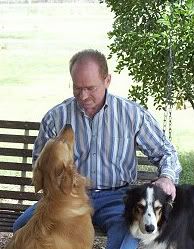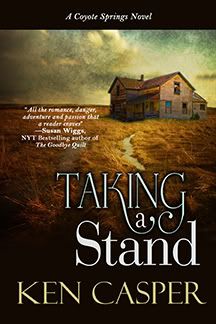 Character development in my books.
Character development in my books.
By Ken Casper
All fiction is character driven. No matter how sophisticated or complicated the plot, it’s still character-driven. We want to know what’s going to happen, but more important, we want actions to be consistent with the people who perform them.
Of course, there are degrees of characterization. If you’re writing a James Bond thriller, you really don’t have to go very deep into characterization. What you see is what you get. The bad guy always does bad things. The good guy is forever heroic. The mental and emotional life expectancy of such books is about as long as it takes to read them. I’m not disparaging those books. I enjoy reading them.
But the stories that stay with me are rich with “characters.” How much of the plot(s) of Gone with the Wind do you clearly remember? You probably have to think about that. But I bet you don’t have to think very hard to remember the characters. All I have to do is say Scarlet or Rhett and you have a complete picture of them. The same with Mammy and Missy.
My writing almost always starts with plot, but somewhere in the writing the focus shifts from events to  people, from being plot-driven to character-driven. I rarely know when it will happen until after it has, then the writing becomes both a new challenge and a really fun adventure. Sometimes too a secondary character takes over a book and changes everything—because he or she has a stronger personality than the main character. I can either abandon that character or rewrite the book. I’ve done both. I can also use that character for a spin-off. Done that too.
people, from being plot-driven to character-driven. I rarely know when it will happen until after it has, then the writing becomes both a new challenge and a really fun adventure. Sometimes too a secondary character takes over a book and changes everything—because he or she has a stronger personality than the main character. I can either abandon that character or rewrite the book. I’ve done both. I can also use that character for a spin-off. Done that too.
Here’s an example of how things change. In one of my books, the heroine is returning home to her father’s house. I had given her a relatively unconventional profession, but she didn’t take on a real personality until I had her go to her car. In my outline it had been a Ford Escort, but then something happened at the keyboard. My fingers typed Chevy Corvette.
I don’t suppose I have to tell you that the type of person who drives an Escort and one who drives a Corvette are very different. I had to completely rethink many of the things she did and said, how she acted and reacted, because her actions had to match her “character.” Have a character do something “out of character,” and the reader will either stop reading (or at least be tempted to), or conclude it’s a ruse of some sort. If James Bond asks for his martini to be gently stirred so as not to bruise the gin, you know something is amiss. Have my heroine dangle furry purple and green dice from the rearview mirror, and the reader will know she isn’t the character she thought she was.
I love it when that happens.

5 Responses to “CHARACTER DEVELOPMENT IN MY BOOKS”